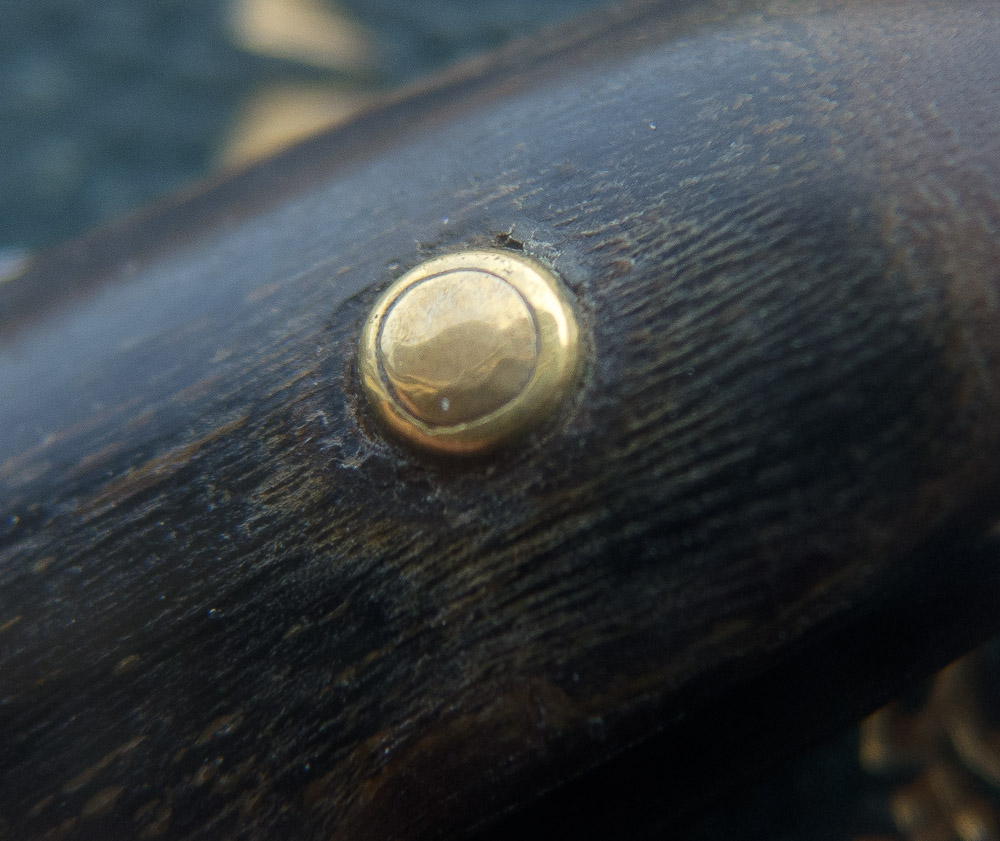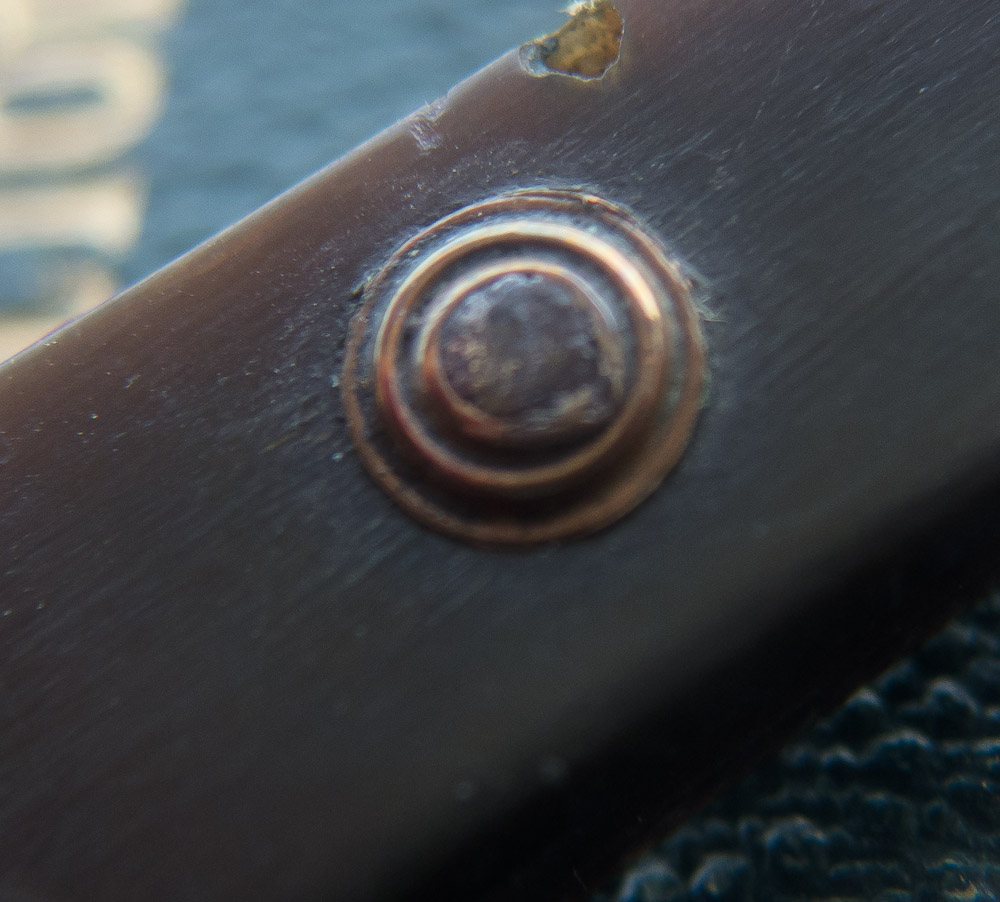
The domed washer on this Hiram Gilbert razor was probably made by the ‘setter-in’, a workman in charge of fitting blades into scales. In this case, probably employed by Joseph Elliot in Sheffield, though the razor is stamped New York).
Razors are put together with pins. Until the 20th century, there was a pin at each end. Then sometime in the 1930’s a third pin was added near the pivot.
It’s a simple, small detail, but it’s difficult to get right in a period restoration. The old firms had a lot of specialized tools at their disposal for making washers.
It’s a tedious task, so today most of us who restore these things just buy commercially available stock. 1/16th inch brass or nickel-steel rods and lots and lots of size #00 washers.
Historically though, washers were significantly different from what we use now. This is going to be an exhaustive photo-essay of the types that were used and how the common types were made.

The simple brass hardware on this 1860’s George Savage is typical of most razors produced before 1900. There was more variation in the late 1700’s and very early 1800’s, but the great majority of razors have pins like this.
Most of the historical washers — also called collars — were made of multiple parts of very thin metal stock. Each layer was punched out of a sheet of rolled metal (brass, bronze, nickel, silver, copper, sometimes even gold).
With larger washers the flat metal was pounded into a shaped receiver. The inner washer helped maintain the volume of the shape without adding appreciably to the weight, as a solid washer of brass or nickel would have.
Even the smaller type collars were made from two parts.
Typically, material like ivory or tortoise shell, was pinned together without washers. Many French razors are assembled with collarless pins regardless of scale material.
Much of this work was done as quickly as possible and often by children, so it’s rarely perfect. The modern restorer can afford to spend far more time on details like this. Following is a small gallery showing some of the many techniques used for assembling razors.














